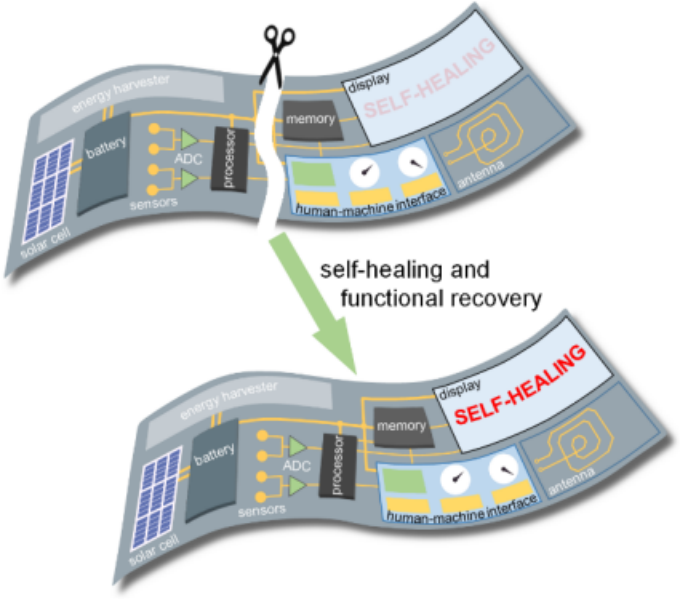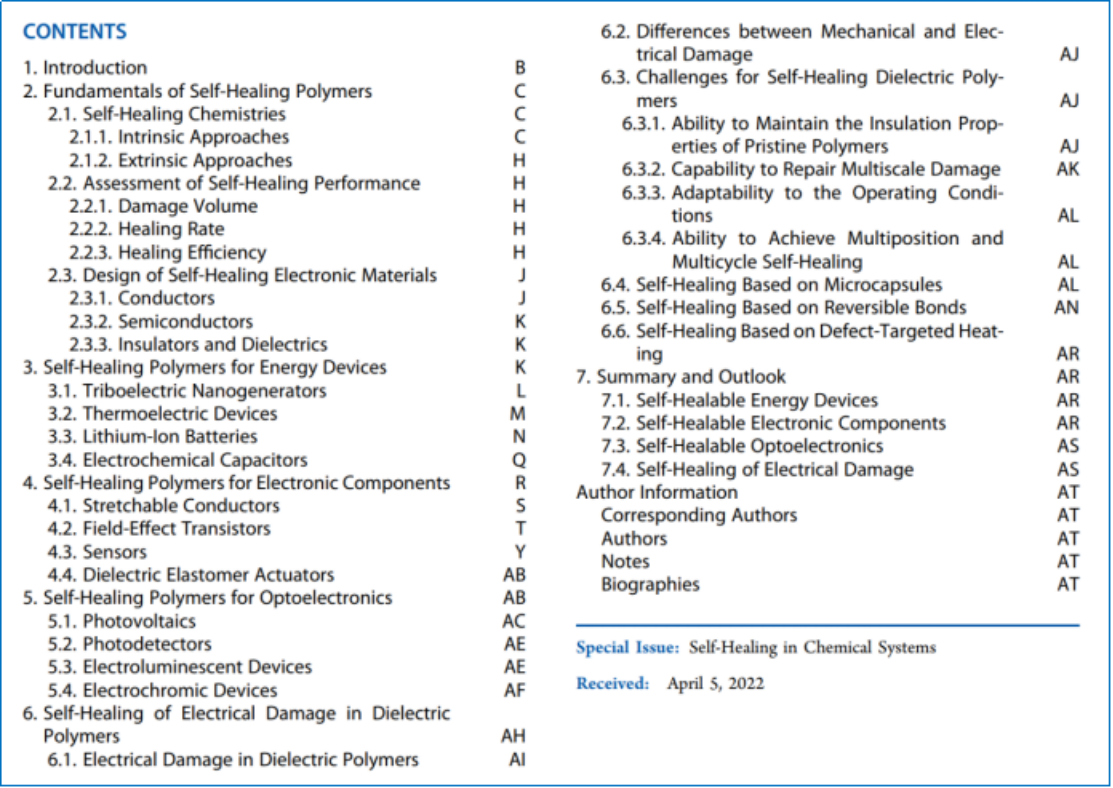recently, the department of electrical engineering and applied electronics (eea) of tsinghua university and the department of materials of pennsylvania state university jointly published a review paper entitled “self-healing polymers for electronics and energy devices” in the internationally important journal “chemical reviews” (impact factor 72.087 in 2021), summarizing the latest research on self-healing material for electronic and energy devices, and the views on the orientation and challenges in this field. the first author of the paper is zhou yao, a postdoctoral fellow in the department of materials, penn state university (a ph.d. student directly admitted to eea in 2014), the corresponding authors are associate professor li qi from eea and professor wang qing from the department of materials, penn state university, and the collaborators include professor he jinliang from eea and so on.

schematic drawing of a complete self-healing flexible electronic system
polymers are widely used in various flexible electronic and energy devices including energy collecting and storing devices, wearable electronic devices, electronic skins, flexible sensors, flexible robots and flexible electronic circuits because of their excellent mechanical properties, and they are suitable for low-cost, low temperature and large-scale fabrication of flexible devices. polymers used in flexible devices can adapt to large strains/stresses or geometric deformations, but they are often subject to mechanical damage such as abrasion, tearing, scratching and accidental cutting, as well as electric damage in long-term strong electric fields in practical application, thereby destroying the structural and functional integrity of the polymer in the device, leading to degraded device performance or even catastrophic failure. therefore, how to improve the reliability and durability of polymers in flexible electronic and energy devices remains a major challenge. inspired by the powerful self-healing ability in biological systems, the concept of self-healing is introduced into polymers to achieve self-healing from mechanical and electrical damage, and effectively improve the service life and reliability of flexible electronic and energy devices. at present, self-healing polymers have been used in brain and energy devices such as lithium-ion batteries, supercapacitors, nanogenerators, solar cells, sensors and photoelectric conversion.
this review first introduces the relevant bases of self-healing polymers, including healing mechanism, performance evaluation and material design, and summarizes the current chemical mechanisms, structural design and functional application of various self-healing polymers in three categories: conductors, semiconductors, and insulating dielectrics. then, it describes the application scenarios of self-healing polymers in different categories: energy devices, electronic components and optoelectronic devices, and particularly discusses the material and device structure design, and the improvement of device performance by self-healing polymers. finally, it analyzed the fundamental difference in healing mechanism and healing strategy between electrical damage and mechanical damage in polymers, and summarized the healing methods against electrical damage in polymers. based on a comprehensive summary of recent researches in this field, this paper looks forward to the future opportunities and challenges of self-healing polymers for electronic and energy devices.

directory of the paper
“chemical reviews”, published by the american chemical society in 1924, is one of the most influential academic journals in the field of international chemistry and chemical engineering, with an impact factor of 72.087 in 2021. the research work in this paper was supported by the national key r&d program and the national natural science foundation of china.
paper link: https://pubs.acs.org/doi/10.1021/acs.chemrev.2c00231








